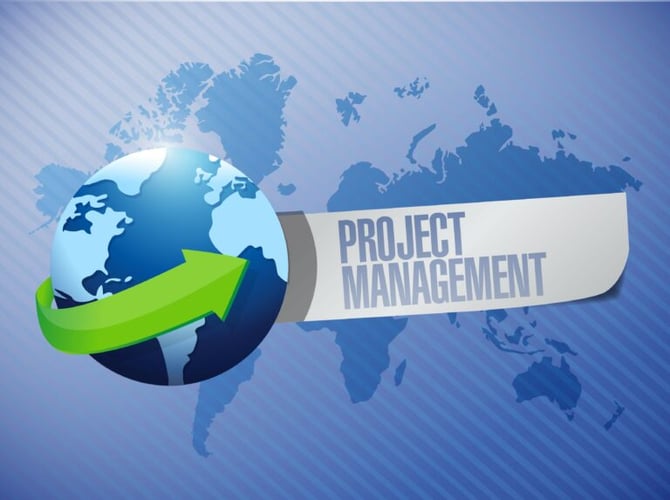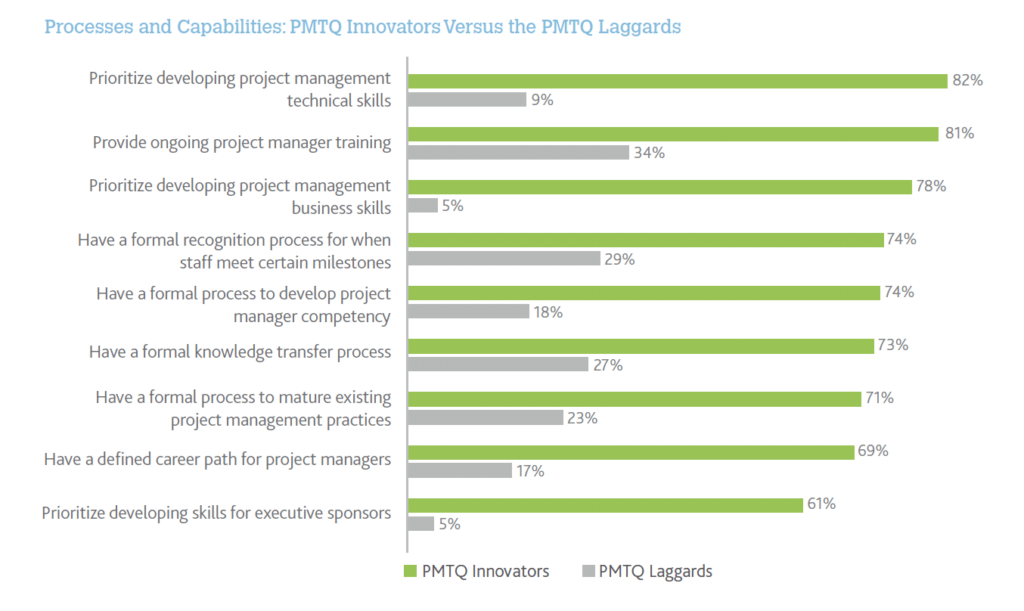June 27, 2022

June 27, 2022

Guilty as charged! I used to think a project manager’s (PM) sole job was to remind everyone about deadlines and set up status meetings. I learned firsthand while working at a medical device start-up, that’s simply not the case.
There is a science to what PMs do – they have a deep understanding of and can perfectly execute the five phases of project management. In this blog post, you’ll learn what takes place during each phase, and a few pro tips for improving success throughout the process.
The five phases of project management – developed by the Project Management Institute (PMI) – include conception and initiation, planning, execution, performance/monitoring, and project close. PMI, established in 1969, is the world’s largest nonprofit membership association for the project management profession. It has set the standards for project, program, and portfolio management. In addition to training, the organization has established the gold standard for PM certification – Project Management Professional (PMP)® -- in addition to seven other certifications available for various types of project management.
PMI is also responsible for the creation of the PMBOK® Guide – a guide to the Project Management Book of Knowledge. Currently in its seventh edition, the PMBOK was the result of a team of over 80 PMI members working together to standardize project management information practices. The guide shares the fundamental practices that are used worldwide to achieve the best results.
According to the PMBOK Guide, the elements of a project lifecycle should define the work the project will accomplish, the deliverables it will produce, the team members involved, and how you will control and approve each project phase.
Determining these elements will take a project from start to finish. It provides a systematic, timely, and controlled process that benefits a project’s stakeholders. This helps the PM define what needs to be accomplished before moving onto the next phase of a project.
The goal of project initiation is to broadly define the project. This process usually begins with a business case or project charter. If research or feasibility testing is required, it should be completed during this phase.
Key stakeholders will do their due diligence to help decide if the project is a “go.” If it is given the green light, the PM will create a project charter or a project initiation document (PID) that outlines the purpose and requirements of the project. It should include business needs, stakeholders, and the business case.
Pro Tip: When creating a PID, don’t get too caught up in technical requirements. Those will be clarified and clearly defined in the next phase.
The planning phase is key to successful project management and focuses on developing a roadmap for the entire team to follow. During this phase, project managers will organize their teams, set up collaborative resources, and set goals.
Two of the more popular methods for setting goals are S.M.A.R.T. and CLEAR:
S.M.A.R.T. Goals – The objective of this method is to help ensure that the goals have been thoroughly vetted. It also provides a way to clearly understand the implications of the goal-setting process.
Specific – Specific goals answer the questions: who, what, where, when, which, and why.
Measurable – Create criteria that you can use to measure the success of a goal.
Attainable – Identify the most important goals and what it will take to achieve them.
Realistic – You should be willing and able to work toward a particular goal.
Timely – Create a timeframe to achieve the goal.
C.L.E.A.R. Goals – A newer method for setting goals that takes into consideration the environment of today’s fast-paced businesses.
Collaborative – The goal should encourage employees to work together.
Limited – They should be limited in scope and time to keep it manageable.
Emotional – Goals should tap into the passion of employees and be something they can form an emotional connection to. This can optimize the quality of work.
Appreciable – Break larger goals into smaller tasks that can be quickly achieved.
Refinable – As new situations arise, be flexible and refine goals as needed.
During this phase, the scope of the project is defined, and a project management plan is developed. It involves identifying the cost, quality, available resources, and a realistic timetable. The project plans also includes establishing baselines or performance measures. These are generated using the scope, schedule and cost of a project. A baseline is essential to determine if a project is on track.
During this phase, roles and responsibilities are clearly defined, so everyone involved knows what they are accountable for.
Some of the documents a PM will create during this phase to ensure the project will stay on track include:
Pro Tip: When creating a WBS, work packages shouldn’t be longer than 10 days. Be sure to solicit the input and perspective from team members about their specific tasks.
During the project execution phase, the team develops and completes deliverables. This phase begins with a kick-off meeting, is marked by the onset of status reports and updates, and transitions into performance and monitoring as the project progresses.
Tasks completed during the Execution Phase include:
While the project monitoring phase has a different set of requirements, these two phases often occur simultaneously.
Pro Tip: Consider using cloud-based project management software so team members can update task status in real time.
Project performance and monitoring ensures that project results align with the management plan. Project managers use key performance indicators (KPIs) to determine if the project is on track.
Some of the most common KPIs for performance tracking include:
During this time, PMs may need to adjust schedules and resources to ensure the project is on track
Pro Tip: Review the business case and scope statement at the end of each phase and make adjustments to the project plan as needed.
Once a project is complete, the team must formally close it. Project managers generally hold a postmortem meeting to evaluate successes and failures. Project close helps a team identify things that went well and areas for improvement.
Once the project is complete, PMs still have a few tasks to complete, including:
Pro Tip: Using a cloud-based software solution is an easy way to collect and save all project documents in one location throughout the life of the project.
As I discovered while working at the medical device start-up, when teams have clarity into the work getting done, there’s no telling how much more they can accomplish in the same amount of time.
To learn more about ProPharma Group and how we can help with project management and other program support, contact us.
TAGS: Life Science Consulting
March 18, 2020
There is more to a project management office than managing projects. In fact, the project management office (PMO) acts as both a watchtower and a lighthouse to guide strategic initiatives toward...

June 16, 2020
In the latest PMI report Pulse of the Profession 2020 (2020), 11.4% of surveyed organizations attribute investment waste to poor project performance. What defines project performance and ultimately...